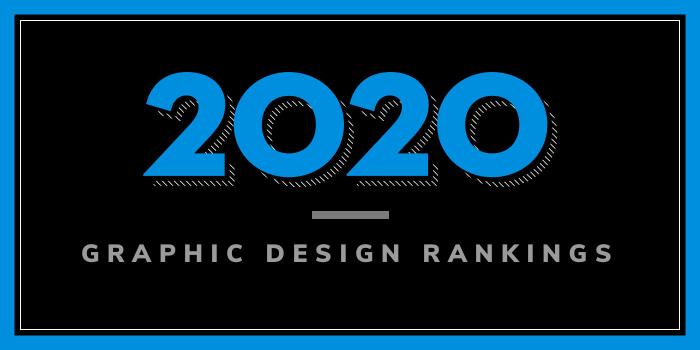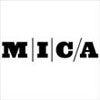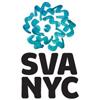
What are the graphic design MFA programs for 2020?
| Ranking | School | State |
|---|---|---|
| 1 | Yale University | Connecticut |
| 2 | Rhode Island School of Design | Rhode Island |
| 3 | Cranbrook Academy of Art | Michigan |
| 4 | Maryland Institute College of Art | Maryland |
| 5 | School of Visual Arts | New York |
| 6 | ArtCenter College of Design | California |
| 7 | School of the Art Institute of Chicago | Illinois |
| 8 | Savannah College of Art and Design | Georgia |
| 9 | California College of the Arts | California |
| 10 | California Institute of the Arts | California |
| 11 | Otis College of Art and Design | California |
| 12 | Virginia Commonwealth University | Virginia |
| 13 | Minneapolis College of Art and Design | Minnesota |
| 14 | University of Texas at Austin | Texas |
| 15 | University of Illinois at Urbana – Champaign | Illinois |
| 16 | The Ohio State University | Ohio |
| 17 | Texas State University | Texas |
| 18 | University of Southern California | California |
| 19 | Rochester Institute of Technology | New York |
| 20 | Kent State University | Ohio |
| 21 | Boston University | Massachusetts |
| 22 | Temple University | Pennsylvania |
| 23 | University of Florida | Florida |
| 24 | University of Texas at Arlington | Texas |
| 25 | Indiana University-Purdue University Indianapolis | Indiana |
Below are the Top 25 Graphic Design schools and colleges in the US offering Master of Fine Arts (MFA) degree programs for 2020. For an explanation of ranking criteria, click here.

Founded in 1701, Yale University serves more than 12,300 students enrolled in dozens of programs in the areas of art, architecture, divinity, drama, forestry and environmental studies, law, management, music, public health, and more. The school, which houses more than 145 departments and schools, is home to one of the most prestigious fine arts schools in the U.S.
Established in 1869, Yale School Art was the nation’s first art school connected with an institution of higher learning. With an enrollment of more than 100 students, the school offers MFA degrees in Graphic Design, Painting and Printmaking, Photography, and Sculpture. An interdisciplinary Film & Video program is also available.
The Yale Graphic Design MFA (Yale GDMFA) is a competitive, 60 credit hour program that accepts just 12 students each year and up to six students into the preliminary-year program. MFA applicants are expected to have “substantial and distinguished experience in visual studies and related professional experience,” says the school. Students can expect support for their graphic design collections in several ways including, “studio work led by faculty meeting weekly, small five- or six-person thesis groups meeting biweekly, and individual sessions with writing and editing tutors.”
Lectures, presentations, and workshops are also part of the program as well as access to “extraordinary” resources including Yale University courses, conferences, films, lectures, museums, and the “extensive” research and rare book collections of Sterling and Beinecke libraries. Students also have a designated workspace in the design studio loft and access to equipment including bookbinding materials, wide format printers, a RISO duplicator, Vandercook press, and workspaces in the School of Art buildings. More resources supporting interdisciplinary projects including motion capture and VR are available at the nearby Center for Collaborative Arts and Media.
The Yale Graphic Design MFA takes two years to complete, full-time.

Founded in 1877, Rhode Island School of Design (RISD) is one of the first art and design schools in the U.S. Serving approximately 2,500 students from across the U.S. and 57 other countries, the school has 19 studio majors and leading to bachelor’s or master’s degrees in the Fine Arts, Architecture, Design or Art Education. The school’s most popular programs are Graphic Design, Film/Animation/Video (FAV), Illustration, Painting, and Industrial Design.
One of the largest departments at RISD, the school says Graphic Design offers “countless opportunities to collaborate within and beyond the discipline,” thanks to access to more than 160 undergraduate majors. The MFA in Graphic Design has two tracks: two-year option designed for students entering with undergraduate degrees in graphic design or other visual communication, and a three-year option designed for students with degrees in liberal arts, the sciences or fine arts. Built on a sequence of required courses, the curricula for both tracks allow candidates to tailor individual courses of study through cross-disciplinary electives.
Two-year option students typically have at least two years of professional experience in the field, so the program is designed to offer an opportunity for “a more sustained and intensive investigation of critical graphic design thinking and making.”
The Graduate Studio “sequence explores the range of skills and activities within the design process, from an initial visual/verbal response to content, to the narrative shaping and communication of messages.”
“Students in both tracks meet in the Graduate Seminar sequence, which initially builds a sophisticated sense of context through discussion of design history and contemporary critical issues, and later helps develop individual approaches to the exploration, investigation and construction of a well-designed thesis proposal.”
The three-year track consists of a foundational year of study in order for students who hold degrees in other areas “to gain the requisite skills in typography, color, theory, image and design application to move on to a thesis investigation in the subsequent two years.” Upon successful completion of the intensive first year, “three-year track students merge studies with two-year track candidates, taking one more typography course but otherwise sharing the same increasingly open curriculum.”
Graduates of both tracks do well after completing the programs. An impressive 96% of all RISD graphic design graduates are employed one year after graduation, and 70% are employed in positions directly related to their major.

Cranbrook Academy began “informal art education” in the late 1920s. This unique art and design school serves around 150 students each year, and consists of 10 programs/departments including 2D Design, 3D Design, Architecture, Ceramics, Fiber, Metalsmithing, Painting, Print Media, Photography, and Sculpture. Each department has an enrollment of approximately 15 students. Students are selected by full-time Artists- or Designers-in-Residence who are the sole faculty members and the heads of the departments. Programs are “free of the formal course structure typical of most art schools and universities. Instead the studio environment is the core of the curriculum with emphasis on developing an individual body of work.”
The 2D Department is the Graduate Graphic Design Department, which places emphasis on “the experimental.” Work being produced in the department “falls on a continuum from book, poster and letterform design, through installation, social practices and contemporary art,” says the Academy. “Issues systematically pursued in the department include work situated at the intersection of design and art, an exploration of the relationship between writing, criticism and production, the process of critique as a generative tool, an interdisciplinary approach to design, and objects first: theory, language, and writing all in support of the object.”
This program leads to an MFA in 2D Design (Graphic Design).

Founded in 1826, Maryland Institute College of Art (MICA) is the oldest independent, continuously degree-granting college of art and design in the U.S. The College enrolls nearly 3,500 undergraduate, graduate and open studies students from 49 states and 52 countries. Around 80 programs leading to the BFA, MA, MFA, and MPS degrees are available in the areas of fine arts, design, electronic media, art education, liberal arts, and professional studies. Post-baccalaureate certificate programs are also offered.
The MFA in Graphic Design (GD MFA) is a 60 credit hour program that features two years of full-time study that the school says combines “critical seminars, guided studio courses, and independent work.” Students in the MFA program may choose a concentration in Critical Studies or Curatorial Practices or “take advantage of electives in many MICA departments, including video, printmaking, and digital media.”
All students have the opportunity to create and exhibit a self-directed design project and a professional portfolio.

Founded in 1947 as “Cartoonists and Illustrators School,” School of Visual Arts (SVA) serves more than 3,700 students enrolled in over 30 programs in areas ranging from fine arts and graphic design to filmmaking and photography. The programs at SVA lead to the BFA, MFA, MA, MAT or MPS degree.
The school offers a Design/Designer as Entrepreneur MFA that “inspires” students to conceive, produce, brand and market their own innovative content. Interaction, motion graphics, branding, and user experience are covered as well as typography as a visual language, video and new media directing, and art book and digital publishing. Students will also take classes in business, marketing, ethnography, strategy, research, advertising, promotion, intellectual property and networking.
MFA students have access to SVA MFA studios, open 24 hours a day and “designed to simulate an operational design/media firm with spacious workstations that allow for individual and collaborative work.” In the studio, students will produce a prototype to pitch to investors, collaborators or distributors. This final product is presented in public at the school’s Venture Forum at the SVA Theatre and subsequently to the design community.
Graduates of the program have gone on to work for commercial and not-for-profit corporations, institutions and businesses. Many founded their own start-ups, design firms and studios. Some have become partners in businesses and individual projects. Graduates have started over 50 design studios around the globe.

Founded in 1930, ArtCenter College of Design serves approximately 2,250 students representing more than 40 countries. The school offers 11 undergraduate and seven graduate degree programs in a variety of Industrial Design, Visual, and Applied Arts Disciplines. A joint MS/MBA program with the Drucker-Ito School of Management is also available. The school, which has a campus in Berlin, two campuses in Pasadena, and satellite studios in Los Angeles at the Peterson Automotive Museum, offers the MFA Graduate Graphic Design (MGx) program.
The MFA MGx program “educates graphic designers who will lead the next global generation of our profession by influencing companies, communities, and society at large and extending the boundaries of communication design,” says the school. “Expanding upon the College’s internationally recognized undergraduate graphic design curriculum, this MFA program provides an immersive education in craft, design leadership and strategic thought—all within a socially responsible transmedia platform that includes print, interaction, motion, packaging and mediatecture.”
The program emphasizes entrepreneurship, leadership, and management “with a focus on practical, yet exquisite, professional design solutions.” The school’s regular two-year program consists of four full terms, a summer term reserved for studio-based independent study, and internship opportunities.
For students who need additional design skills to complete the MFA degree, ArtCenter offers a three-year program that features two additional terms of undergraduate courses “tailored to meet the student’s individual needs.” Upon completion of the two terms, students advance to the traditional MGx course track.

Founded in 1866, the School of the Art Institute of Chicago (SAIC) is one of the oldest accredited independent schools of art and design in the country. Serving nearly 3,700 students from 78 countries, SAIC offers more than 50 areas of study from Animation and Costume Design to Visual Communication Design and Writing.
The MFA in Graphic Design is offered through the Visual Communication Design Department. The program allows students to explore other related departments at SAIC such as Printmedia, Writing, Photography, Architecture, Interior Architecture, and Designed Objects, and Film, Video, New Media, and Animation (FVNMA). The purpose of this opportunity is to “extend students’ design work into new territories,” says the school.
Other Graphic Design Program highlights include an active AIGA (American Institute of Graphic Arts) student chapter, Exploratory Languages (a lecture series featuring leading designers and design educators from across the country), and CIPB (Chicago International Poster Biennial), which is an international competition representing leading designers from throughout the world. Internship and optional study abroad opportunities are also available.

Savannah College of Art and Design (SCAD) was founded in 1978. With campuses in Savannah, Atlanta, Hong Kong, and Lacoste, France, the school serves more than 14,000 students from all 50 states and more than 100 countries. Offering more art degree programs and specializations than any other art and design university, SCAD has plenty of opportunities to study at domestic and international locations. The school also offers more graphic design programs than just about any other school on our list. Options include BA, BFA, MA, and MFA degrees in Graphic Design, a Design Management MA, and a Minor in Graphic Design.
All programs highlight Product Packaging, Entrepreneurship, Mobile Technology, Interface Design and User Experience. Specific MFA course highlights include Design Research, Analysis and Discourse, Ideation Models and Process, Methods of Contextual Research, Typographic Voice and Visual Narrative, Visual Analysis of Static Content, Curated Narrative for Dynamic Content, Experience Design for Physical Spaces, User-centered Strategy and Process, and Visual Design for Interactive Contexts. MFA students will take three Thesis courses: Research and Discovery, Synthesis and Insight, and Validation and Execution.
Students may complement their degree with a Certificate in Digital Publishing and a Graduate Internship is also part of the program.
SCAD graduates are prepared to join elite agencies, multinational companies, or start their own businesses as they lead branding, visual marketing, interactive media, and immersive campaigns. Graduates work at top companies around the globe including Apple, IBM, Ralph Lauren, Under Armour, Verizon, and many others.
The MFA is offered in Atlanta, Hong Kong, Savannah, and online.

Founded in 1907, California College of the Arts (CCA) serves around 1,900 students enrolled more than 30 degree programs. Graduate options for aspiring graphic designers include an MFA in Design that focuses on Graphic Design, Industrial Design, and Interaction Design.
Highlights for all programs include the opportunity to immerse in the areas of Brand Identity, Print, Motion Graphics, and Screen-Based and Interactive Design, elective offerings that will “strengthen” students “design toolkit,” and the opportunity to gain real-world experience through CCA’s extensive internship program. Students have the opportunity to intern for design firms, publishing houses, and nonprofits as they work toward a polished thesis project.
“Situated within a top art college,” says the school, “the Graphic Design program also benefits from an atmosphere of hands-on making and experimentation. Students are constantly giving and getting feedback and testing their ideas with faculty, visiting experts, and peers.”
Graduates of the Graphic Design Programs at CCA have landed positions at innovative design firms, museums, publishing houses, technology companies, nonprofits, and more.

Walt and Roy Disney formed California Institute of the Arts (CalArts) in 1961 through the merger of two existing Los Angeles schools for art and music. The school became the nation's first postsecondary institution to offer graduate and undergraduate degrees in both the visual and performing arts. Just shy of a decade later, the new college, CalArts, opened its doors to offer programs in art, design, film, music, theater and dance.
Today, the school serves around 1,500 students enrolled in more than 70 undergraduate, graduate, and doctoral programs across six schools including the School of Critical Studies, The Sharon Disney Lund School of Dance, the School of Art, the School of Film/Video, The Herb Alpert School of Music at CalArts, and the School of Theater. The School of Art houses the Graphic Design Program, which offers a Graphic Design MFA with two- and three-year options.
During the two-year Program, students deepen and refine their work through a set of required and elective courses covering subjects such as type design, web design, typography, motion graphics, design theory and design history. Students will also work with visiting designers on short-term projects within the focused studio environment.
“The three-year Program is designed for students who do not have a Graphic Design undergraduate degree, but who typically demonstrate a talent and enthusiasm for design, and a level of expertise in their given field. The heart of the Program is the Visual Literacy course, a critique class comprised of a series of structured projects designed to teach design principles, process, methodology and skills.” Students in both programs are required to pass a Thesis Review to obtain the MFA degree.

Otis College of Art and Design (OTIS) was established in 1918 by founder and publisher of the Los Angeles Times, General Harrison Gray Otis. The school serves approximately 1,100 full-time students enrolled in 11 BFA degree programs ranging from Graphic Design to Toy Design. The school also offers MFA degrees in Fine Arts, Graphic Design, Public Practice, and Writing, as well as a variety of minors and certificate programs.
The MFA in Graphic Design is an accelerated yearlong, “LA-based student, faculty and research collective of designers investigating the issues of our day,” says the school. During the program, students learn to work across media and platforms through a series of visiting workshops, courses in design theory and history, studio projects, and round table discussions. “The coursework engages research, discourse, critical thinking, and iterative process with the goal of discovering many possible design outcomes. In so doing, the program supports students in taking on the challenges and opportunities in contemporary graphic design practice.”
Course highlights include Design Week, Seminar Round Table, Directed Study: Mentorship, Contemporary Graphic Design Issues, Models of Practice, Workshop, Theory and Criticism, and Entrepreneurship.
Graduates of the Graphic Design programs at OTIS have landed positions at major companies such as Apple, Anthropologie, LACMA, Guess, Metro, Capitol Records, and many others.

Virginia Commonwealth University (VCU) was established in 1838. The school serves more than 31,000 students enrolled in 225 academic programs across 13 schools and one college. An additional four programs are offered at VCU’s Qatar campus. The School of the Arts (VCUarts), which serves more than 3,000 students, offers 25 degree programs. The Department of Graphic Design offers an MFA with a Concentration in Design/Visual Communications.
Students in the NASAD-accredited MFA program “concentrate on the philosophical, communicative, and aesthetic relationships of visual problem solving and the interacting skills leading to the effective articulation of concepts,” says the school. This intensive two-year, 60 credit hour full-time program requires courses such as Visual Communications Workshop, Research Methods in Visual Communications, Visual Communications Seminar, Research Documentation and Exhibition Design, and Directed Thesis Research in Visual Communications.
Students will also take three elective courses, totaling nine credit hours. Courses include Visual Communications Teaching Practicum, Visual Communications Research/Individual Study, and Visual Communications Internship.
Graduates of the VCUarts MFA in Design/Visual Communications Program will have the skills and knowledge needed to pursue a career in Design Education and/or further their professional practices in conducting visual or theoretical research, and in investigating the intersections of function and expression in design problem solving.

Minneapolis College of Art and Design (MCAD) was established in 1886. The school, which shares a block with the Minneapolis Institute of Art, serves more than 800 students from 45 states and 15 countries. Of these, 50% are enrolled in Design, 38% in Media Arts, 10% in Fine Arts, and the remaining 2% in MCAD's new Arts Entrepreneurship Department. More than 20 programs are available across several departments, including an MFA in Visual Studies.
The 60 credit hour MFA program allow students to pursue creative work in Graphic Design, Illustration, Interactive Media, Paper and Book Arts, Printmaking, and many others. Students will participate in opportunities “unique to MCAD’s MFA program” at art galleries, art centers, and nonprofits, designed to position students for success post-graduation. Most credits in the program are earned through one-on-one work with a faculty mentor who is an expert in the students chosen field. The school described mentorship as “the core of the MCAD graduate curriculum.”
“Each semester the student and mentor determine its content, which is summarized in a Learning Contract in context with the student Long-Range Learning Plan. Students work one-on-one with their mentor in the advancement of studio work, studio research, and professional practice. Mentor Credits coursework is structured to facilitate discussions and assess goals on a weekly basis. Credits may also include attending visiting artist/designer lectures, exhibitions and workshops, audited courses, seminars, and internship and externship opportunities.
Course highlights include Interrogating the Modern, Entering the Contemporary Field, Graduate Critique Seminar, and Thesis Preparation.
Optional internships are part of the program as well as a capstone thesis exhibition and paper in the final year. Students also have the option to study abroad in places such as Italy, Japan, Ireland, England or Germany, or elsewhere in the U.S.

The University of Texas at Austin (UT Austin) was founded in 1881. The school opened its doors in 1883 with one building, eight professors, one proctor, and 221 students. Today, UT Austin is home to nearly 52,000 students enrolled in over 500 degree programs and fields of study across 18 colleges and schools. The College of Fine Arts, School of Design and Creative Technologies offers an MFA degree in Design.
The MFA is a 60 credit hour program that accepts exceptional students with preexisting design skills. The program prepares students for “thought and organizational leadership in the field of design or in fields where design is being utilized strategically. In addition to advanced studio work in established design disciplines,” students have the “opportunity to study, explore and work in disciplines that intersect with design.”
All students in the program “will enjoy a formal curricular partnership with another discipline on campus and develop a thesis that thoughtfully intersects design with another field such as business, anthropology, engineering, or art.” In addition, the MFA Design program offers preparation for college teaching in the field of design through a series of classes exploring design pedagogy.

Established in 1867 as Illinois Industrial University, University of Illinois at Urbana – Champaign is one of the original 37 public land-grant institutions created after President Abraham Lincoln signed the Morrill Act. The school serves nearly 48,000 students through 15 colleges and instructional units. The College of Fine and Applied Arts, School of Art and Design offers 64 credit hour MFA in Graphic Design that prepares students to contribute to the field of design by entering into practice, academia or both.
Specialized tracks of study for the program include Sustainable and Regenerative Design, Urban Sociology and Critical Race Design, Visual and Cultural Studies, and (student-proposed) Applied Research in Responsible, Innovation, Social Impact, and Engagement. Students also have the opportunity to “explore responsible futures through research in traditional print media and emergent technologies including, but not limited to, data visualization, digital interaction, information design, systems thinking, and visual narrative.”
Other program highlights include the opportunity to take courses at Siebel Center for Design, collaboration with PhD students in Informatics, who specialize in design, and networking through “world-class” Programs across campus. Students will also develop partnerships at the Research Park—a leading technology hub that cultivates start-ups and accelerates corporate innovation at companies such as Abbott Laboratories, ADM, Ameren, Capital One, and State Farm.

Established in 1870 as Ohio Agricultural and Mechanical College, The Ohio State University offers over 200 majors, minors and specializations from which more than 68,000 students can choose several paths to focus on graphic design in the College of Arts and Sciences’ Department of Design. Students who would like to pursue graduate study at OSU have two options: the MFA in Visual Arts offered through the Department of Art and the MFA in Digital Animation and Interactive Media offered through the Department of Design. The MFA in Visual arts offers emphases in seven studio areas: Art and Technology, Ceramics, Glass, Painting and Drawing, Photography, Printmaking, and Sculpture. The 66 credit hour, three-year program allows students to work across disciplines and with faculty from all seven studio areas.
The MFA in Digital Animation and Interactive Media allows students to select courses that cover visual design, technical skills for animation and interactive media, programming and algorithms, audio design, writing and scripting, and professional development. Students in all graduate art programs have 24/7 access to private and semi-private studio spaces as well as The Wexner Center for the Arts—a world-renowned contemporary art center located on campus; The Fine Arts and Cartoon Libraries; and the Urban Arts Space—an off-campus, OSU-run gallery in downtown Columbus. The Urban Arts Space is the location of the third-year thesis exhibitions.

Founded in 1899, Texas State University, San Marcos (TXST) serves more than 38,000 undergraduate and graduate students enrolled in more than 200 bachelor’s, master’s and doctoral degree programs — from biology to music to business to geography and more. With two campuses in San Marcos and Round Rock, Texas, TXST offers its programs through 10 colleges, including the College of Fine Arts & Communication—home of the Communication Design Program, which offers an MFA pathway.
The school says that the Communication Design Program is “one of the largest public programs in the country.” The MFA curriculum is “designed to provide advanced study in the areas of corporate advertising art direction, graphic design, and digital media design. The graduate program will provide students with the following: advanced problem-solving methodologies, updating technological advancement relating to communication design, examination of historical events within the discipline, and emerging theoretical constructs.”
“Web-based delivery is heavily featured in course curriculum, as well as online video conferences, live chat, and blogging interfaces. In addition, the program offers courses via extended weekend seminars, evening courses, and independent directed study. This non-traditional structure allows active professionals to participate.” The MFA. program also offers “limited graduate assistant positions for qualified students who wish to immerse themselves full time in their graduate studies.”
For students seeking a future career in higher education, the program provides the appropriate academic credential and the terminal degree in the discipline of visual communication design: the MFA.
“The exchange of ideas on an international basis is an important component of the MFA Communication Design program.” Guest professors from around the world visit the TXST campus to” lecture and share their unique perspective on communication design with graduate students. In addition, selected students are encouraged to participate in international field trips to expand their knowledge in the field of communication design.”
Communication Design courses are taught in a studio environment and students have access to the Mitte Complex, which has Macintosh labs, an open lab for student use, digital color printing availability including RISO, digital still and video camera checkout, and a photography studio and a multidisciplinary innovation lab equipped with laser cutter, CNC router, 3D printer and die cutter.
TXST Communication Design students have had their work published in CMYK, Step Inside Design, Graphis New Talent Annual, and PRINT. Students have also received recognition in national, regional, and local competitions such as The One Show, American Advertising Federation Awards, National DSVC Student Show, Creative Summit, Art Director's Club of Houston, Austin Addy Awards, and San Antonio Addy Awards.

Established in 1880, University of Southern California (USC) serves 47,500 students enrolled in more than 200 undergraduate programs, 300-plus graduate programs, and more than 150 minors. Program options for aspiring graphic designers are offered in the Roski School of Art and Design. First organized in 1883, the Roski School of Art and Design at USC is the oldest art school in Southern California.
“A supportive environment for experimentation in visual art of all media,” says the school, Roski “encourages interdisciplinary, progressive approaches to studio art, design, curatorial practice and critical studies.” The school offers an MFA in Design—a five-term program administered in collaboration with the Graduate School. This professional degree in the practice of design highlights mentored relationships with design faculty, participation in regular seminars, and discussions and studio visits with leading visiting designers, writers and theorists from around the world. The Roski School's partnership and affiliation with the contemporary design community in Los Angeles, such as American Institute of Graphic Arts (AIGA), is also critical component of the MFA Design Program.
Students will complete an MFA Design Thesis and the opportunity to gain experience as a teaching assistant is available on a competitive basis.

Founded in 1829, Rochester Institute of Technology (RIT) serves nearly 19,000 across eleven colleges and schools emphasizing career education and experiential learning. The school, which has global locations in China, Croatia, Dubai, and Kosovo, offers an MFA in Visual Communication Design (VCD).
The 60 credit hour program is composed of courses in Communication Design, Interactive Design, and Motion and 3D Digital Design. In addition, students are required to take Design History Seminar, Design Theory and Methods Seminar, and Professional Practices. The school says, “seminars explore cross-disciplinary principles, theories and methods that can be used by designers. Through selected readings from current periodicals, critical writing, hands-on involvement, presentations and guest lectures, students will broaden their awareness of topics such as systems thinking, human factors, semiotic theory, and visual rhetoric.”
The MFA in VCD, which enrolls around 100 students, allows all eligible students to participate in an optional co-op program the summer between their first and second years. Some students may have the opportunity to participate during the fall and spring terms.
Graduates of the MFA in VCD Program at RIT will have career options such as Graphic Designer, Visual Designer, Art Director, Interactive Designer, UI/UX Designer, Digital Product Designer, Presentation Designer, Freelance Designer, Junior Designer, and many others.

Kent State University (KSU or Kent State) was founded in 1910. The school serves, which consists of an eight-campus system, serves approximately 43,457 students enrolled in more than 300 degree programs across dozens of colleges and schools. The College of Communication and Information, School of Visual Communication Design, offers an MFA in Visual Communication Design—the first in the state to offer the terminal degree in the field.
The MFA “serves students with a strong undergraduate and/or professional experience in design who wish to advance into leadership roles,” says the school. Graduates “typically pursue careers in design education, but also stand out in the industry for their ability to solve problems from a research-based design perspective.”
The program takes an interdisciplinary approach to design focused on theory, research, and design process. “Classes have been developed to create an educational experience in design highlighted by field research methods, design thinking, and social innovation, augmented by practical university teaching experience where MFA candidates work hands-on with students at the freshman and sophomore level.”
The school says, “this approach helps graduates gain the necessary tools to succeed in their careers as innovative leaders in visual communication, design management, entrepreneurship and higher education.”
All School of Visual Communication Design students must complete 300 hours of internship before graduation. Most internships are paid, and students have the opportunity to work at major companies across Cleveland and in Chicago, San Francisco, and New York.

Founded in 1839, Boston University (BU) serves more than 35,000 students from 130+ countries, enrolled in 17 schools and colleges, and more than 300 programs of study. With three campuses and over 10,000 faculty and staff, BU is Boston’s largest employer.
The College of Fine Arts at BU offers an MFA in Graphic Design that “provides a sequenced studio approach to advanced design thinking and problem solving for visual communication,” says the school. This approach prepares students to “thrive in a dynamic professional environment.” Graphic Design Studios form the programs core and electives complement the studios, providing the opportunity to specialize in areas of interest. Elective courses currently include Information Design, Design for the Web, Interactive Design, Experience Design, Motion Graphics, Design Theory, History of Graphic Design, Editorial Design and Exhibition Design.
MFA students also benefit from lectures by nationally and internationally distinguished designers and direct contact with the industry. The program culminates in a master’s thesis, which is presented in an exhibition format at the Boston University Art Galleries.

Founded as a night school by Russell Conwell in 1884, Temple University serves around 40,000 undergraduate, graduate and professional students enrolled in more than 500 academic programs across 17 schools and colleges. The largest university in Philadelphia, Temple has international campuses in Tokyo and Rome, and study abroad opportunities across six continents.
Tyler School of Art and Architecture at Temple University offers an MFA in Graphic & Interactive Design—an intensive two-year immersion in the practice of design. The goal of the program, says the school “is to create a new generation of design entrepreneurs by providing them with real-world experience and the opportunity to be their own client.” Faculty identifies “specific MFA projects that have great entrepreneurial potential and guide students through the rigorous processes to make them real. Many of the MFA projects are now making their way into GAID’s design incubator, The Hatchery, a new initiative to promote entrepreneurship and transform student projects into marketable products.” Students work directly with the design incubator’s Director on marketing plans for graduate projects created at Tyler.
Graduate faculty “work closely with the MFA students in a program fueled by collaborative exploration. While faculty members guide students in defining and focusing on their unique projects, all students are engaged in supporting the development of each other’s work through regular group critiques and shared research.”

Founded in 1858 as Gainesville Academy, University of Florida (UF) serves more than 56,000 students enrolled in 30 certificate programs, 100 undergraduate majors and 200 graduate programs across more than a dozen colleges and schools. The College of the Arts houses the School of Art + Art History, which offers an MFA in Design and Visual Communications (MXD).
The MFA has two- and three-year options that consist of 60 credits total (terminal degree). This includes 24 credits in graduate design courses (research seminars, studio and fieldwork practice), 15 credits of open elective, six credits of practicum, and 15 credits for the MFA project, which is self-directed and designed, allowing students to focus in any area of Design and Visual Communications.
When comparing the two- and three-year MFA options, the three-year option is for students funded with an assistantship or fellowship. Along with funding, the University of Florida provides tuition remission for nine credit hours per semester. The two-year option is for students who are self-funded or have other sources of funding and desire an accelerated path. Students should be mindful of the time commitment that four to five courses per semester and any part-time work will require.

University of Texas at Arlington (UTA) originated as Arlington College in 1895. The school began with roughly 75 students. Today, total global enrollment for UTA is nearly 60,000. The school offers more than 180 degree programs across nine colleges, including the College of Liberal Arts (CoLA), which houses the Department of Art and Art History. Here, students can earn an MFA in Art that covers Visual Communication (Graphic Design, Web Design, App Design, Game Design and Illustration), Emerging Media, Intermedia, Film and Video, Printmaking, Drawing, and more.
MFA students must take 60 semester credit hours over six semesters of the three-year program. The student will be required to spend a minimum of three semesters in the MFA program with one academic year in residency as a full-time student. Thirty-nine credit hours are reserved for the concentration, with the remainder dedicated to supporting studio courses, art history courses, and free electives.
Students are required to take courses such as Research in Visual Communication, Critical Perspective in the Visual Arts & Visual Communication, Research in Studio Intermedia, and Creative Strategies. Elective options run the gamut from Research in Printmaking to Research in Photography Digital Imaging. Independent Study is also part of the program as well as the Thesis Exhibition.
Graduates of the Art programs at UTA have career opportunities such as Graphic Designer, Illustrator, Photographer, Art Director, Exhibition Designer, Art Dealer, Printmaker, Animator, Web/App Designer, and many others.

Established in 1969, Indiana University-Purdue University Indianapolis (IUPUI) was created after Indiana University (est. 1891) and Purdue University (est. 1869) merged their numerous programs and schools. Today, across the system, the school serves more than 45,000 students from 50 states and 142 countries, enrolled in 350 undergraduate, graduate, and professional programs. Seventeen schools grant degrees in Engineering, Health Sciences, Liberal Arts, Life Sciences, and more.
The Herron School of Art + Design at Indiana University-Purdue University offers an MFA in Visual Communications Design (VCD) that “focuses on forms of inquiry and actions involved in designing,” says the school. The program is “experiential, involving both group and individual projects.” In seminars, methods, and action research studios, students will develop knowledge, skills, and practices that will be applied to the final thesis research project. Course highlights for the program include Methods for Design Research, Seminar: Leadership in Design Practice, Collaborative Action Research in Design, Thesis Writing, and Methods for Design Synthesis.
Other program highlights include access to research and studio spaces including the Think It Make It Lab, woodshops, photo lighting studios, book arts studio, and the Herron Art Library.
Herron VCD alumni have landed positions at “powerful” companies such as Google, Humana, Samsung Research America, and many others.
